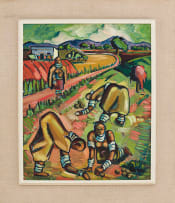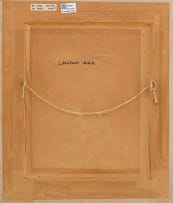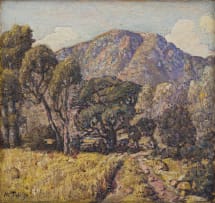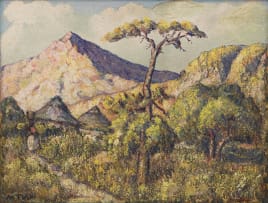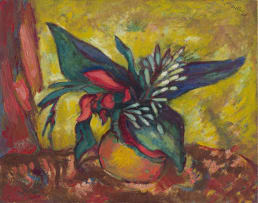Modern and Contemporary Art: Evening Sale
Live Virtual Auction, 7 November 2023
Evening
Incl. Buyer's Premium & VAT
About this Item
Notes
In the December of 1935, having recently returned from a year at the Westminster School of Art in London, and shortly after closing his first ever exhibition at Glen's Music Salon in Pretoria, a twenty-four-year-old Alexis Preller came across a group of women labourers on the northern outskirts of town, each of them turned out in dazzling traditional dress. Hammered and weighty brass rings glinted on their necks and ankles, and coloured beads decorated their aprons and armbands. These were Ndzundza-descended women of the Southern Ndebele people, and their village, to which a young Alexis followed them one day, with its stepped terraces, mud huts, enclosed kraals, and joyfully-distinctive painted walls, would become one of the artist's greatest sources of inspiration. His first painting to include these Ndebele figures, or Mapogga, as they were also called, was Native Study (Mapogges) [sic]; it showed them with long and gently cylindrical limbs and conical breasts, and it was one of the 117 paintings - and the only one by Alexis - exhibited at the Empire Exhibition at Milner Park in Johannesburg from September 1936. His growing interest in the daily activities of these Ndebele women prompted a number of similar paintings at the time, of which the present lot is a fine and previously unrecorded example. Worked up expressively with short and deliberate brushstrokes à la Vincent van Gogh, the surface of the painting is defined by dabs, strips and ribbons of silvery pink, lime, vibrant yellow and purple. From this gently naïve starting point, Preller would refine and reinvent the Mapogga motif within his richly symbolic pictorial world.


